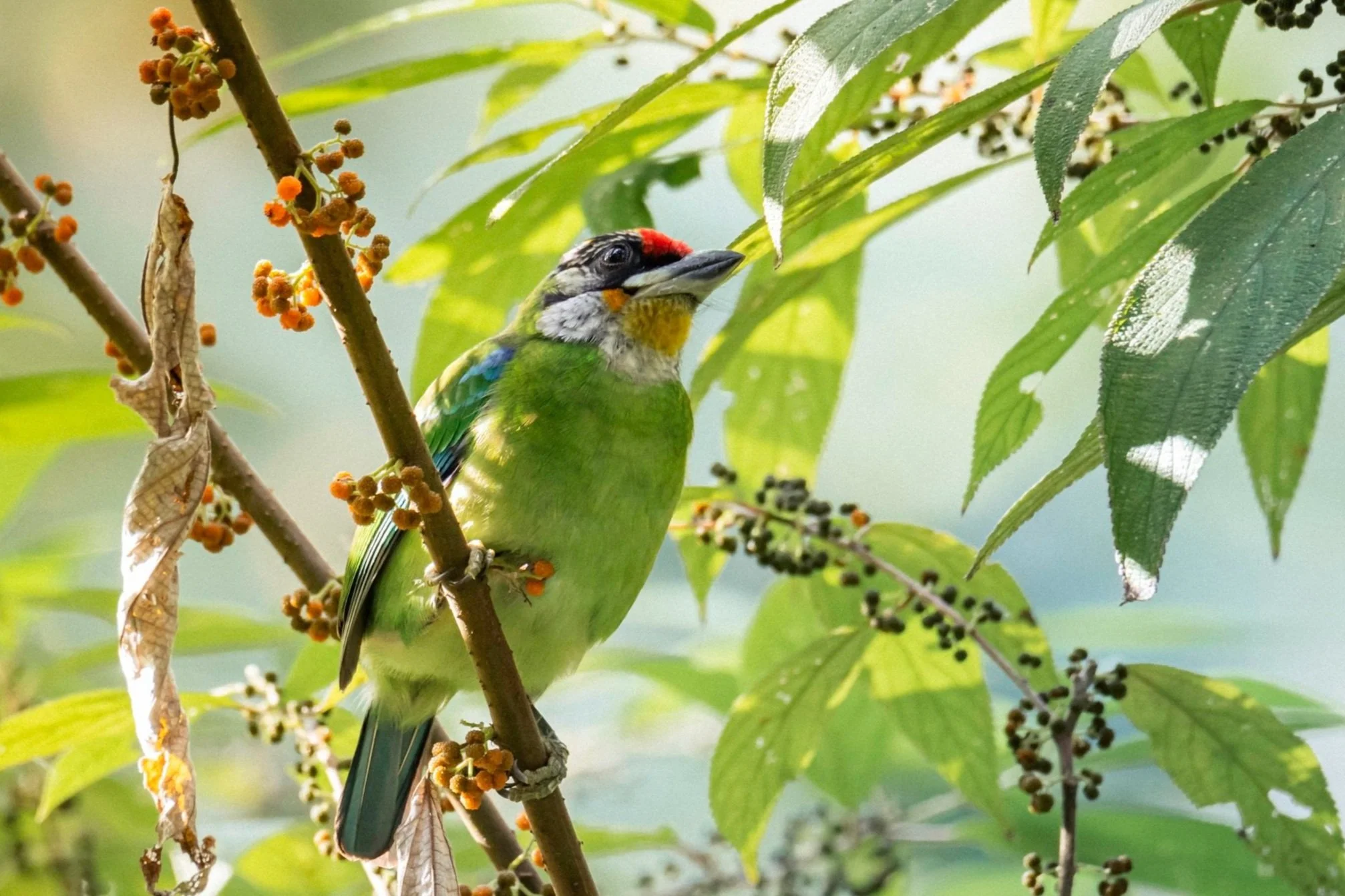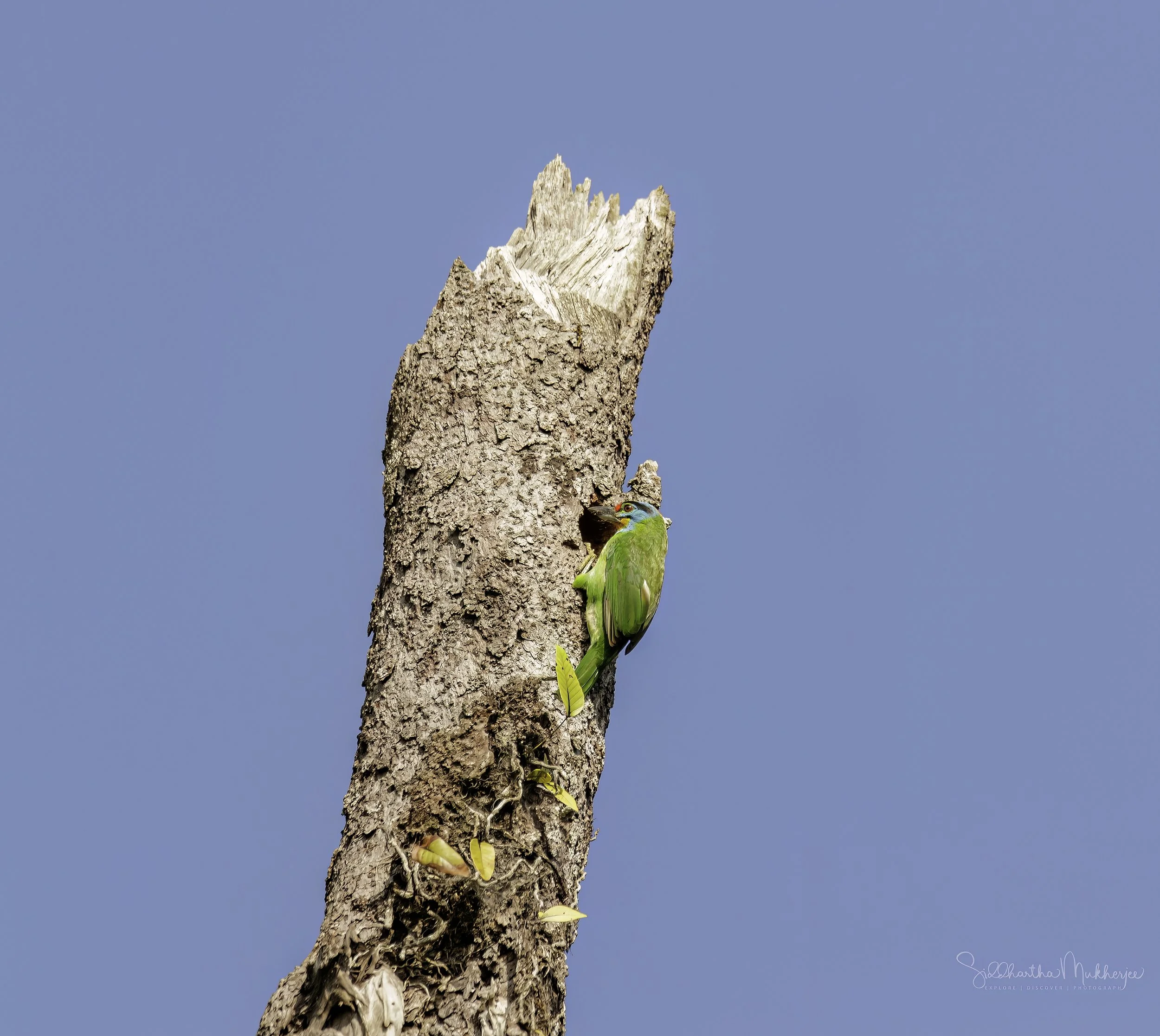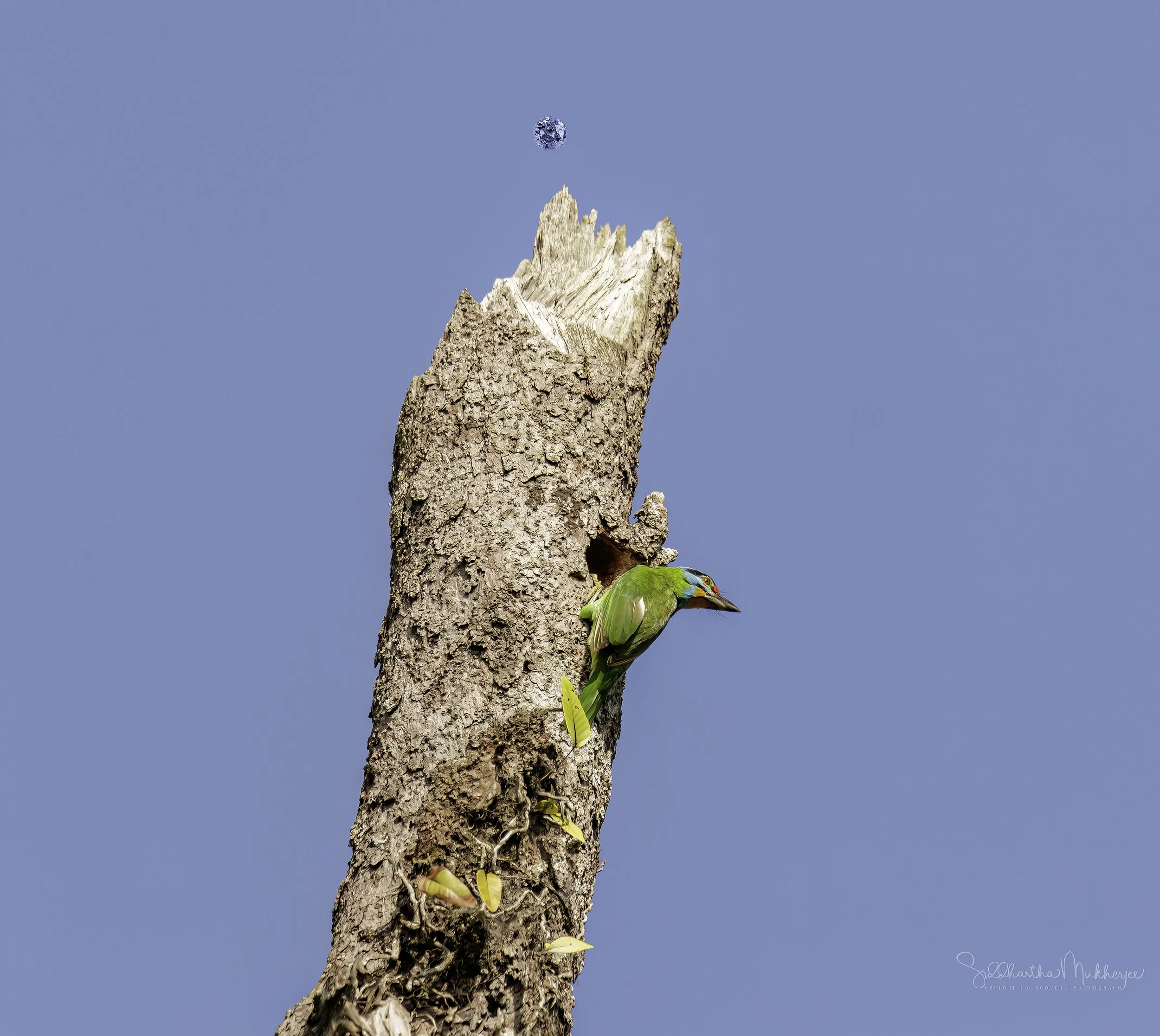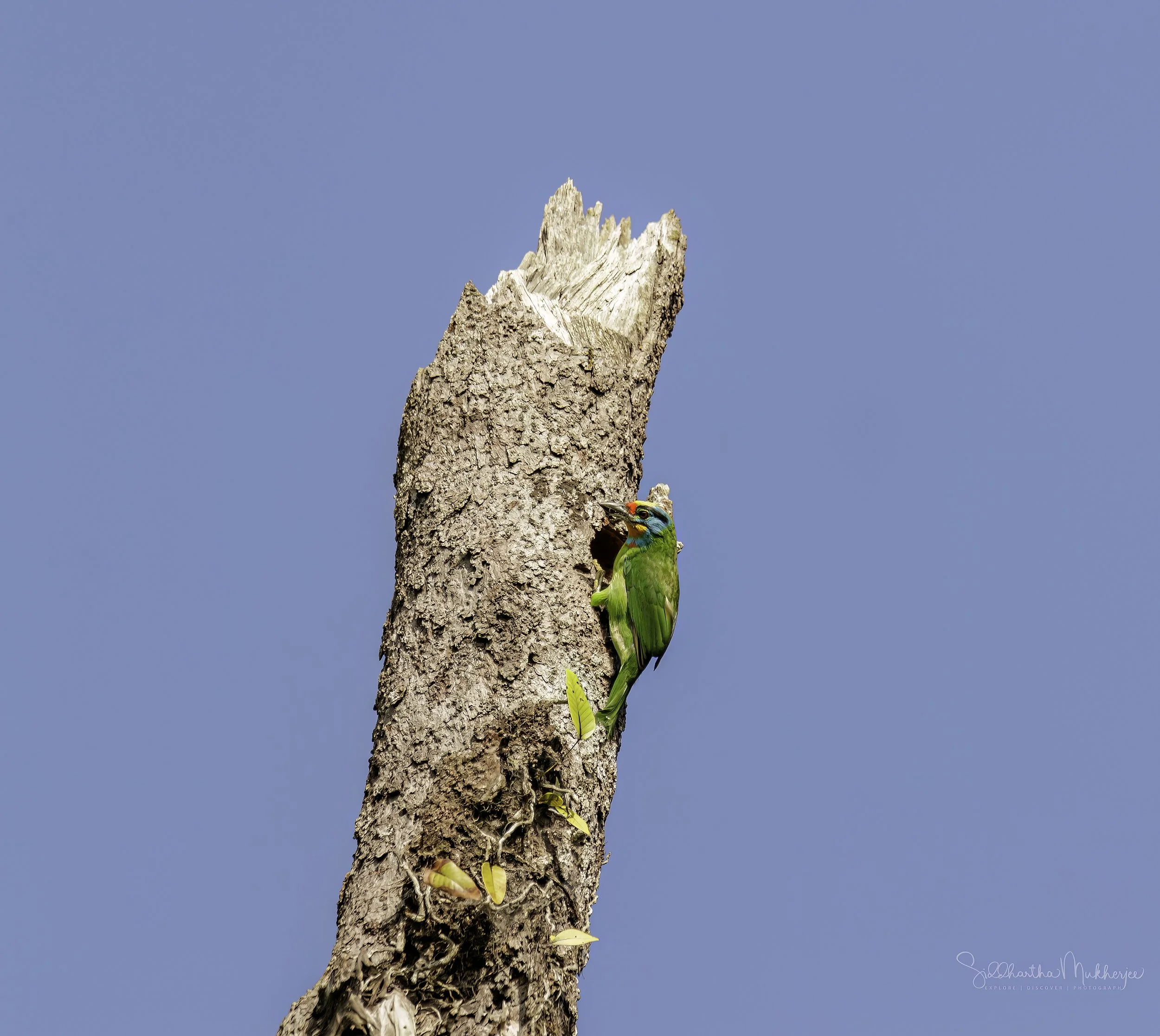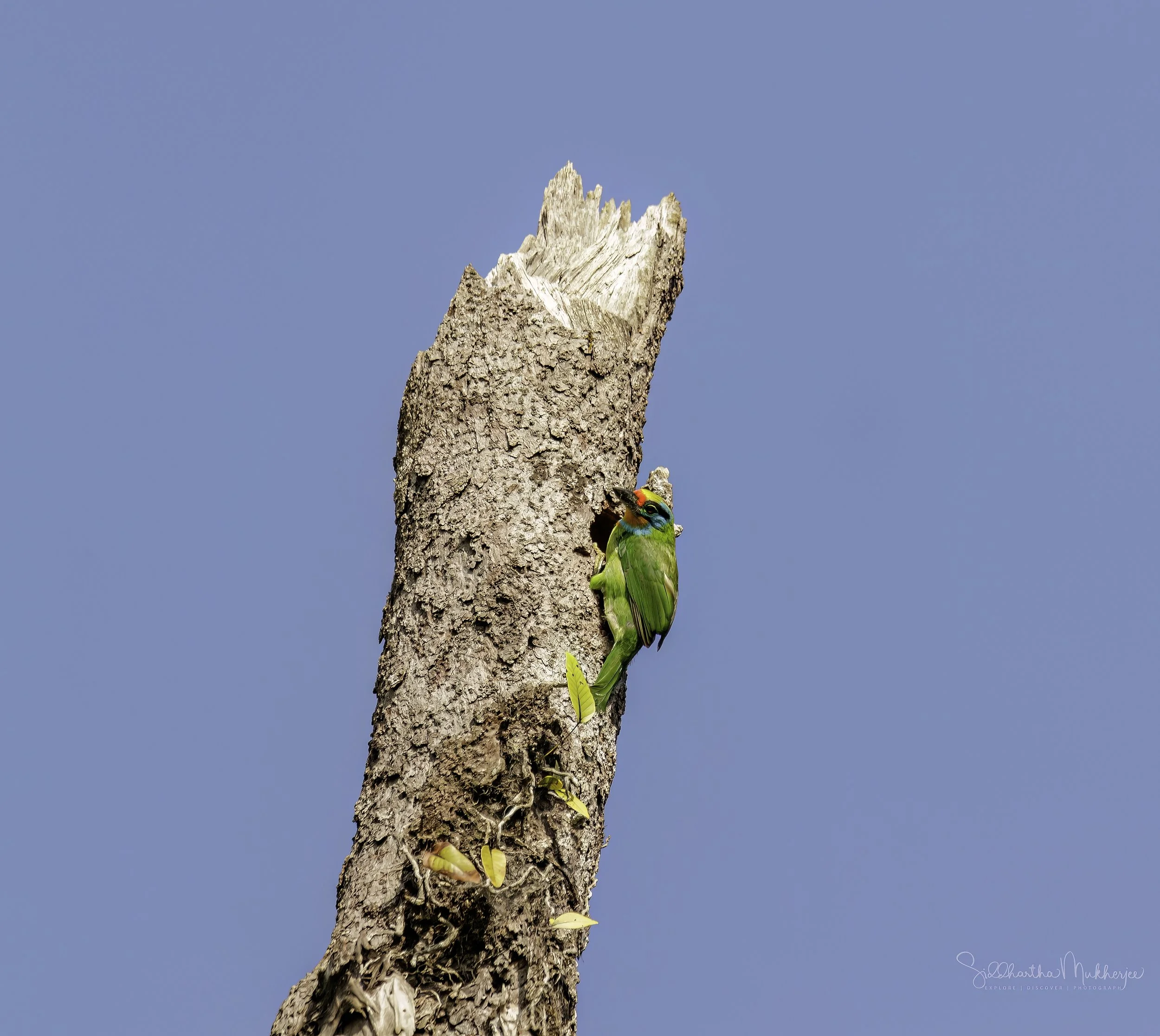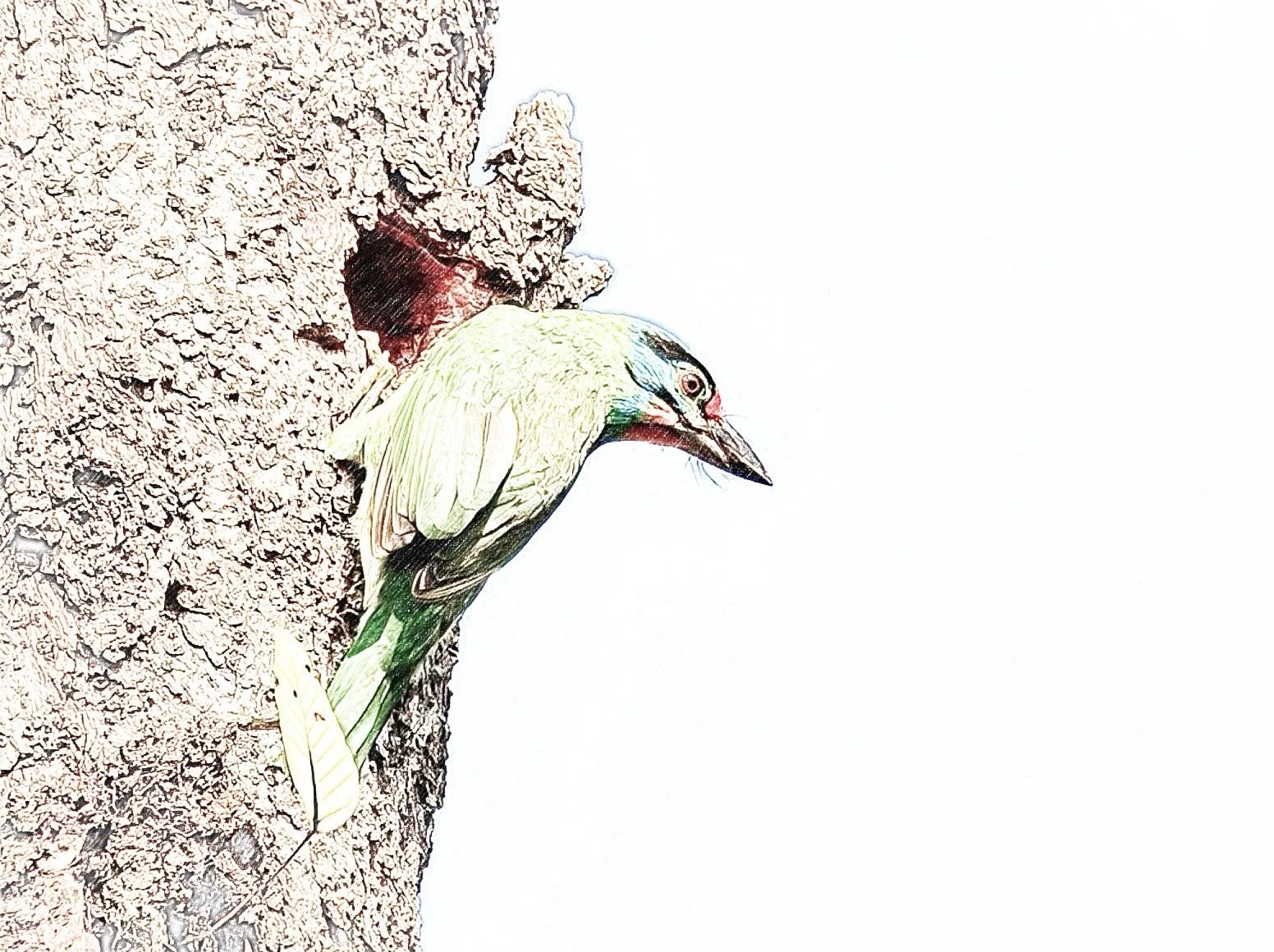Black-browed Barbet
Psilopogon oorti
Sungai Congkak & Bukit Fraser, Malaysia
I love Fraser’s Hill! A leisurely 99 kilometers drive from Kuala Lumpur, Fraser’s Hill is cool, uncomplicated and quiet. It also has 7 terrific trails that are suitable for trekking and birding. Located in the highlands of the Titiwangsa range, many visitors to Fraser’s Hill come for the cooler climes that attracted the British administration to transform this 19th century mining outpost into a hill station some 100 years ago. Others come for its quaint English charm and colonial architecture. Compared with that other former colonial hill station, Cameron Highlands, Fraser’s Hill has not been ravaged by mass tourism and unchecked development, and its forests, which are home to indigenous and endemic species, have not been felled for illegal farm lands. In fact, concerned about this, the Pahang government undertook to freeze development of its virgin forests in 2010, though vigilance remains essential.
This picturesque highland village is famous for its montane rainforest and extensive biodiversity. Over 400 species of birds have been recorded in the surrounding area. The Hemnant and Bishop trails are the most popular forest trails amongst birders, although Telekom loop has proven to provide the most consistent and productive birding, and its diverse mixed flocks, superior accessibility and well-lit clearings offer a plethora of exciting and unique photography opportunities. The diversity of flora and fauna varies rapidly with changes in altitude, and lower elevation birding at The Gap and Jeriau Waterfall offers additional specialty species not found in the higher elevation cloud forest. Bird feeders at the Shahzan Inn always attract attention, and a hidden feeding station at the abandoned Jelai Highland Resort offers photographers the opportunity to get up close and intimate with species that wouldn't otherwise show well. Travelling to Fraser's hill requires a car, as other transport options are limited; although several companies offer guided tours if renting a car isn't possible. There are two one-way roads, each designated to either ascend or descend, which function as a loop to coordinate traffic up and down the hill.
Over time Fraser’s Hill’s popularity has waxed and waned, but it’s on an uptick right now. Weekends see a deluge of birders, hikers, cyclists, super bikers and families, yet as a day trip or weekend destination it remains pleasantly unencumbered. One reason for this is its walkability. The lack of heavy traffic, its compactness and connectability, and its fresh mountain air and abundant tree shade makes Fraser’s Hill a joy to explore on foot. It also has a variety of short trails that cut through its forests. Off these trails my favourite is the popular Bishop’s Trail.
The trail is named after Reverend CJ Ferguson-Davie from Singapore, who rediscovered Fraser's Hill in 1917 while looking for his friend - the original founder Louis James Fraser who had gone missing circa 1915. Ferguson and a fellow bishop failed to find any trace of Fraser, but they did recommend the area for development as a hill resort, which the British government took heed. Ferguson himself was given a piece of land where he built a quaint cottage and called 'The Retreat'. Later, he opened a trail from his cottage that led to neighbouring bungalows Muar and Cicely; this later became Bishop trail in present day. Bishop’s Trail is a 3.4-km loop trail generally considered a moderately challenging route, it takes an average of 1 h 33 min to complete. This is a very popular area for birding, hiking, and running, so you'll likely encounter other people while exploring. The trail is open year-round and is beautiful to visit anytime.
From a birding perspective there are records of about 400 species inhabiting the entire area and it is dependent on your luck and time of year what you can see. You can see some of the species I have been fortunate to record here in my numerous trips. This is by no means a complete list and only the ones I have been able to put on my blogs. There are quite a few more I am yet to write about.
Today is about a barbet I saw here for a very short time and only once - the Black-browed Barbet.

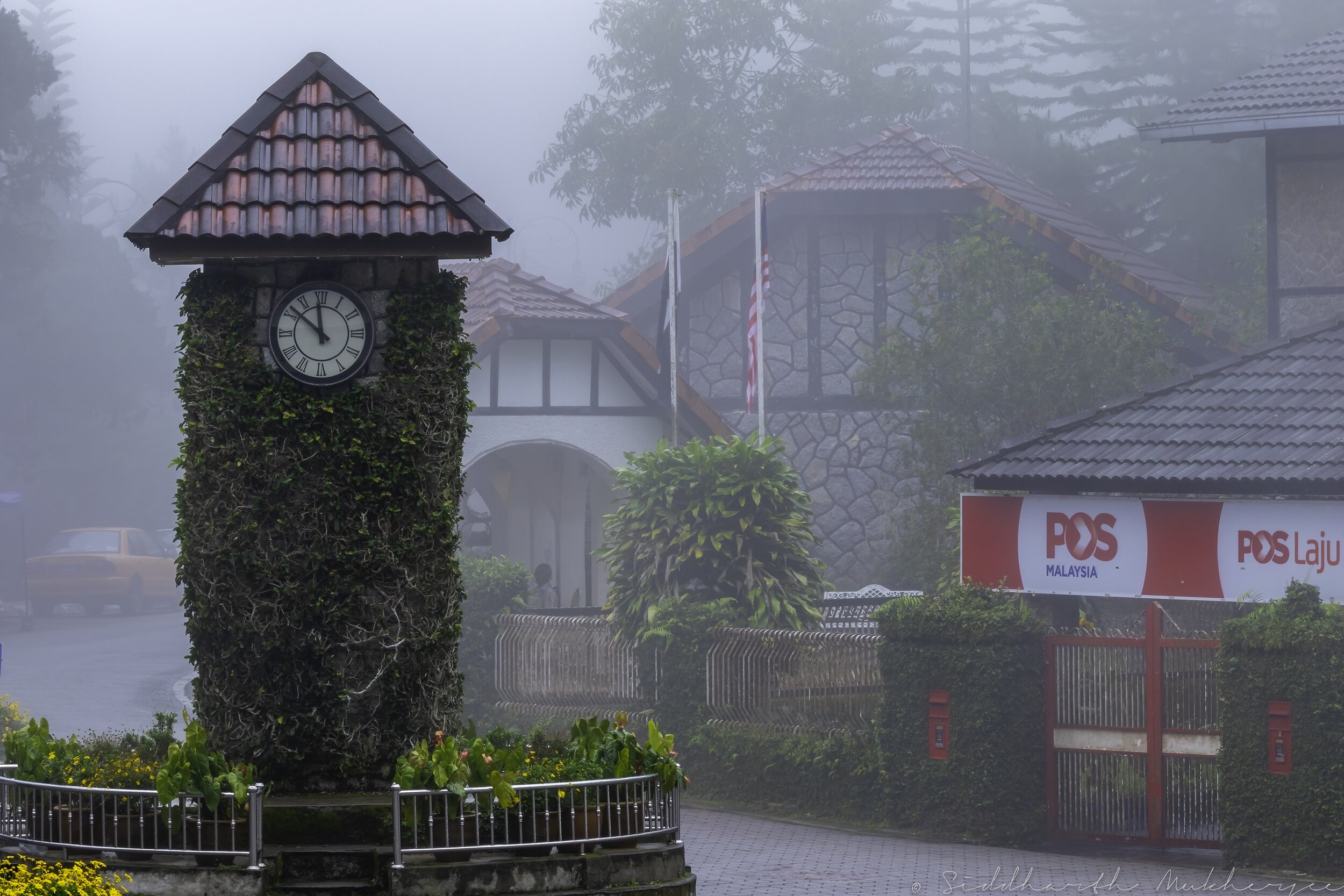
Sungai Congkak
About 35 kilometres from both Kuala Lumpur city center and Selangor’s Kajang town, lies the Sungai Congkak Recreational Forest, or Hutan Lipur Sungai Congkak. Also known as Chongkak Park & Resort, it is s a popular recreational forest in the Hulu Langat district of Selangor state and is managed by Tourism Selangor.
A dipterocarp rainforest that is part of the great Titiwangsa mountain range, Sungai Congkak Recreational Forest is rich in flora and fauna with meandering, crystal-clear rivers. Nestled in a cool and hilly area of Hulu Langat, the route leading to the forest passes through quaint towns and villages where the pace of life is noticeably slower.
Slightly deeper into Sungai Congkak Recreational Forest is the starting point of a challenging hiking trail to Bukit Chenuang (Chenuang Hill) which takes about an hour. Reaching an altitude of about 850 meters, the peak here provides great views of the surrounding valley. From Bukit Chenuang, one can continue hiking the trail to Bukit Batu Kumbang, which is about an hour away. The views of the Titiwangsa mountain range from the peak of Bukit Batu Kumbang make it a worthwhile hike.
Read about my other birds from this beautiful habitat. These are but a few I have written about so far.
With that said lets move on to this gorgeous barbet perched really high up on a dead trunk where it had burrowed a nest.
‡‡‡‡‡
Black-browed Barbet
Megalaimidae, the Asian barbets, are a family of birds, comprising two genera with 35 species native to the forests of the Indomalayan realm from Tibet to Indonesia. They were once clubbed with all barbets in the family Capitonidae but the Old World species have been found to be distinctive and are considered, along with the Lybiidae and Ramphastidae, as sister groups. Some of the birds in this family I have already covered are the White-cheeked Barbet (Endemic to South India only), Fire-tufted Barbet & Golden-throated Barbet.
The Black-browed Barbet (Psilopogon oorti) is an Asian barbet native to Peninsular Malaysia and Sumatra, where it inhabits foremost forests between 600 and 2,000 m (2,000 and 6,600 ft) altitude. It is listed as Least Concern on the IUCN Red List because of its wide distribution and stable population.
It is a loud but sluggish & difficult-to-see canopy inhabitant of highland forests in peninsular Malaysia and Sumatra. Note the leaf-green body, brightly coloured face, and heavy black bill. It is more often heard than seen and when you do hear it, listen for its long, unending series of hollow-sounding notes. Like many other barbets, it can be difficult to locate when singing, but can sometimes be seen at fruiting trees. It was formerly regarded as the same species as Taiwan, Indochinese, and Chinese Barbets.
Bucco oortii was the scientific name proposed by Salomon Müller in 1835 who described a barbet specimen collected in Sumatra. It was placed in the genus Megalaima proposed by George Robert Gray in 1842 who suggested to use this name instead of Bucco. Molecular phylogenetic research of Asian barbets revealed that Megalaima species form a clade, which also includes the Fire-tufted barbet, the only species placed in the genus Psilopogon at the time. Barbets formerly placed in this genus were therefore reclassified in the genus Psilopogon.
The Black-browed Barbet is mostly green with a yellow blue-bordered throat. It has black streaks above the eyes and red patches above its bill, lores, throat and nape. It is a montane green barbet with red on the forehead just above the bill, the lores and nape, a yellow-gold throat with blue lower border, red on the breast, a black stripe over and behind the eye and in the upper malar region, and blue ear-coverts. Both sexes show very little red on nape, broadly yellow-tipped crown feathers, red on breast restricted to small lateral spot. There appears to be no known differences between sexes, but among specimens only males are labelled as having red or orange-red eyes. The immatures are duller, with subdued colours, especially the red parts, which are smaller and fainter. These barbets inhabit montane and dipterocarp forests between 600 and 2,000 m in western Sumatra and Peninsular Malaysia.
Little is known of its diet but it is considered that it forages on insects and fruits in the upper and middle levels of the canopy. It takes insects, mainly when breeding, but little information is available here too. It appears to be dominated by the Fire-tufted Barbet (Psilopogon pyrolophus) at fruiting trees and the Black-browed is active in the canopy and subcanopy, only occasionally lower.
The Black-browed barbet forages on insects and fruits in the upper and middle levels of the canopy. In Sumatra, it breeds from February to November, and in Malaysia from March to June. It nests in tree holes.
Until recently, the Black-browed Barbets were treated as conspecific with the Taiwan Barbet (Psilopogon nuchalis), Chinese Barbet (Psilopogon faber) and Indochinese Barbet (Psilopogon annamensis), but differs from all three in characters indicated under those species. Therefore Monotypic.
The Black-browed is generally found in lower montane forest and upper dipterocarp forest in Malaysia, also pine forest and orchards and towns with fruiting trees in Sumatran highlands. Above 600 m in Sumatra and 750 m in Malaysia, where it has been typically recorded to 1300 m but occasionally to 2400 m; usually occurs at elevations below the Golden-throated Barbet (Psilopogon franklinii) and above the Yellow-crowned Barbet (Psilopogon henricii). It is considered a resident and presumably generally sedentary.
The Black-browed Barbet is not globally threatened and is fairly common to common in most of range and common in Sumatra. Little is known of their population and breeding biology for its conservation needs to be assessed; further research is required.
The following gallery of the Black-browed Barbet is from the single instance I have spotted this at Bukit Fraser in the vicinity of Bishop’s Trail.
‡‡‡‡‡
Related Posts



